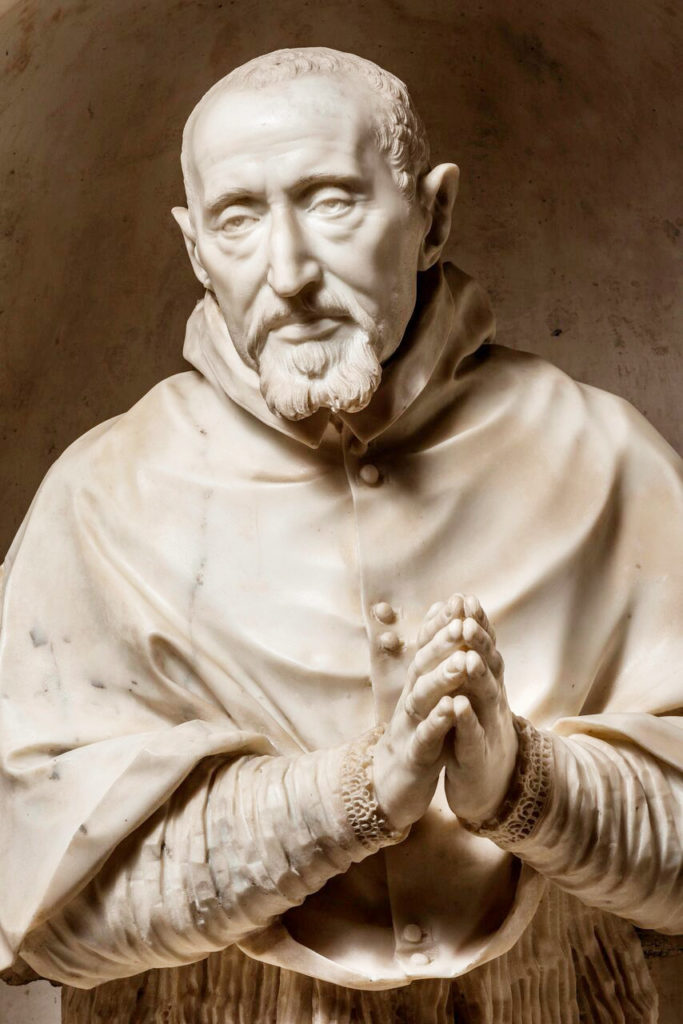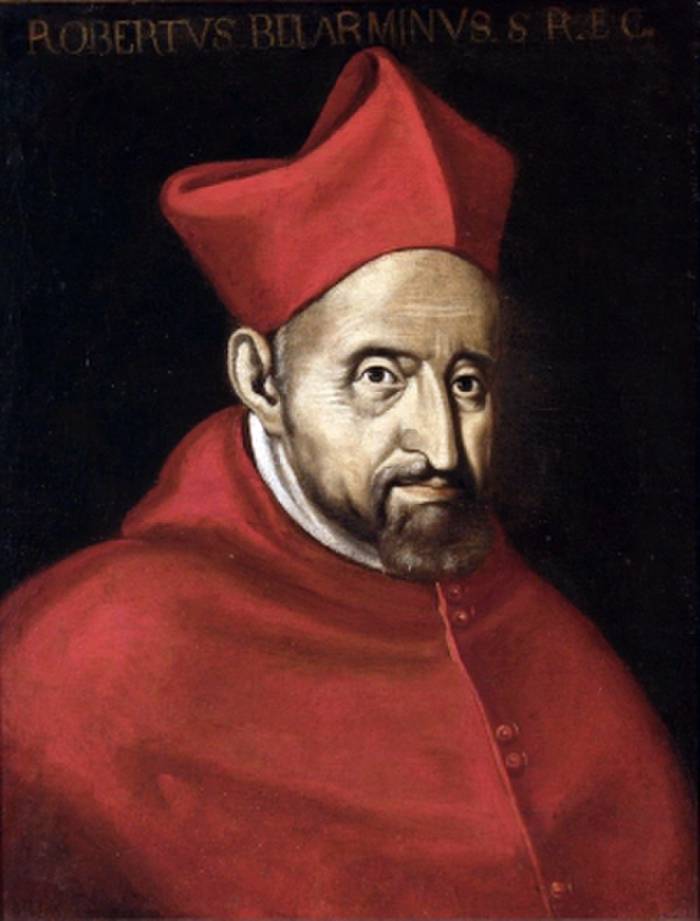
17 September
St Robert Bellarmine (1542-1621)
Bishop and Doctor of the Church
Born: 4 October 1542, Montepulciano
Died: 17 September 1621 (aged 78) Rome, Papal States
Venerated in: Catholic Church, Anglican Communion
Canonized: 29 June 1930, Rome by Pope Pius XI
Patron: canon lawyers; canonists; catechists; catechumens; archdiocese of Cincinnati, Ohio
St. Robert Bellarmine (1542-1621) was born in Montepulciano, Italy, and died in Rome. The son of noble parents, he entered the Society of Jesus, finishing his theological studies at Louvain, Belgium. His services to the Church were outstanding and many. He occupied the chair of controversial theology in Rome. He defended the Holy See against anti-clericals. He wrote books against the prevailing heresies of the day. His catechism, translated into many languages, spread the knowledge of Christian doctrine to all parts of the world. He was the Counsellor of Popes and spiritual director of St. Aloysius Gonzaga. He helped St. Francis de Sales obtain approval of the Visitation Order. As a religious he was a model of purity, humility and obedience; as a bishop and Cardinal, an example of great love for his flock. St. Robert Bellarmine’s feast is celebrated on May 13 in the previous calendar (1962).
COLLECT PRAYER
O God, who adorned the Bishop Saint Robert Bellarmine with wonderful learning and virtue to vindicate the faith of your Church, grant, through his intercession, that in the integrity of that same faith your people may always find joy. Through our Lord Jesus Christ, your Son, who lives and reigns with you in the unity of the Holy Spirit, God, for ever and ever.
Things to Do:
- Study the connections between Robert Bellarmine, Aloysius Gonzaga, and Francis de Sales.
- Learn more about the different versions of the Bible.
- Learn more about the Code of Canon Law and what canon lawyers do, compared to regular lawyers.
- Read the Congregation for the Doctrine of the Faith’s document, Doctrinal Note on Some Questions Regarding the Participation of Catholics in Political Life.
- Read The Seven Words on the Cross (Audio Book, YouTube) and The Art of Dying Well (pdf file) by St. Robert Bellarmine online.
- Read more about St. Robert Bellarmine on EWTN Saints
- Read Volume One of St. Robert Bellarmine’s major work, Controversies of the Christian Faith here. You can also read The Art of Dying Well online here.
St. Robert Bellarmine

St. Robert BellarmineHe was born at Montepulciano in Tuscany on October 4, 1542, the feast of the Poverello of Assisi toward whom he always cherished a special devotion. The day on which he died, September 17, is now the feast in honor of the stigmata of St. Francis.
In 1560 Robert Bellarmine entered the Society of Jesus. He easily ranks among its greatest men, illustrious for learning as well as for piety, humility, and simplicity of heart. If it were possible to summarize his life in a single sentence, one that would resolve all the varied activities and accomplishments of his long career, a verse from the psalm might serve: “If I forget you, Jerusalem, may my right hand be forgotten.” His most important work was controversial in nature but the impact of his presentation “resembled the final chord in a mighty cantata, a chord that resounded through all the vice and scandal resulting from the internal corruption of the Church of that day, and that chord heralded Mother Church as one, holy, and Catholic” (E. Birminghaus).
Bellarmine also acted as confessor to the youthful Aloysius and John Berchmans. It might be asked why three hundred years passed before the beatification and canonization of Bellarmine. Long ago Bishop Hefele pointed to the reason when he wrote: “Bellarmine deserves the highest degree of respect from Catholics, even though he has not been canonized. Those who labored to besmirch him have only erected a monument of shame for themselves!” Finally in 1923, he was beatified; canonization followed in 1930, and on September 17, 1931, Pope Pius XI declared him a doctor of the Church.
— Excerpted from The Church’s Year of Grace, Pius Parsch
Source: Catholic Culture
For more, lookup the EWTN account (from Catholic Encyclopedia)